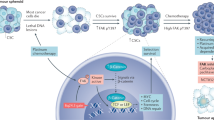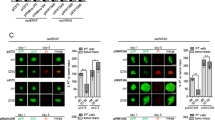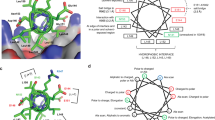Abstract
FAK (focal adhesion kinase) is widely involved in cancer growth and drug resistance development. Thus, FAK inhibition has emerged as an effective strategy for tumor treatment both as a monotherapy or in combination with other treatments. But the current FAK inhibitors mainly concentrate on its kinase activity, overlooking the potential significance of FAK scaffold proteins. In this study we employed the PROTAC technology, and designed a novel PROTAC molecule F2 targeting FAK based on the FAK inhibitor IN10018. F2 exhibited potent inhibitory activities against 4T1, MDA-MB-231, MDA-MB-468 and MDA-MB-435 cells with IC50 values of 0.73, 1.09, 5.84 and 3.05 μM, respectively. On the other hand, F2 also remarkably reversed the multidrug resistance (MDR) in HCT8/T, A549/T and MCF-7/ADR cells. Both the effects of F2 were stronger than the FAK inhibitor IN10018. To our knowledge, F2 was the first reported FAK-targeted PROTAC molecule exhibiting reversing effects on chemotherapeutic drug resistance, and its highest reversal fold could reach 158 times. The anti-tumor and MDR-reversing effects of F2 might be based on its inhibition on AKT (protein kinase B, PKB) and ERK (extracellular signal-regulated kinase) signaling pathways, as well as its impact on EMT (epithelial-mesenchymal transition). Furthermore, we found that F2 could reduce the protein level of P-gp in HCT8/T cells, thereby contributing to reverse drug resistance from another perspective. Our results will boost confidence in future research focusing on targeting FAK and encourage further investigation of PROTAC with potent in vivo effects.
Similar content being viewed by others
Log in or create a free account to read this content
Gain free access to this article, as well as selected content from this journal and more on nature.com
or
References
Chuang HH, Zhen YY, Tsai YC, Chuang CH, Hsiao M, Huang MS, et al. FAK in cancer: from mechanisms to therapeutic strategies. Int J Mol Sci. 2022;23:1726.
Dawson JC, Serrels A, Stupack DG, Schlaepfer DD, Frame MC. Targeting FAK in anticancer combination therapies. Nat Rev Cancer. 2021;21:313–24.
Spallarossa A, Tasso B, Russo E, Villa C, Brullo C. The development of FAK inhibitors: a five-year update. Int J Mol Sci. 2022;23:6381.
Luo M, Zhao X, Chen S, Liu S, Wicha MS, Guan JL. Distinct FAK activities determine progenitor and mammary stem cell characteristics. Cancer Res. 2013;73:5591–602.
Cromm PM, Samarasinghe KTG, Hines J, Crews CM. Addressing kinase-independent functions of fak via PROTAC-mediated degradation. J Am Chem Soc. 2018;140:17019–26.
Law RP, Nunes J, Chung CW, Bantscheff M, Buda K, Dai H, et al. Discovery and characterisation of highly cooperative FAK-degrading PROTACs. Angew Chem Int Ed Engl. 2021;60:23327–34.
Popow J, Arnhof H, Bader G, Berger H, Ciulli A, Covini D, et al. Highly Selective PTK2 proteolysis targeting chimeras to probe focal adhesion kinase scaffolding functions. J Med Chem. 2019;62:2508–20.
Gao H, Wu Y, Sun Y, Yang Y, Zhou G, Rao Y. Design, synthesis, and evaluation of highly potent FAK-targeting PROTACs. ACS Med Chem Lett. 2020;11:1855–62.
Diaz Osterman CJ, Ozmadenci D, Kleinschmidt EG, Taylor KN, Barrie AM, Jiang S, et al. FAK activity sustains intrinsic and acquired ovarian cancer resistance to platinum chemotherapy. Elife. 2019;8:e47327.
Ji N, Yang Y, Cai CY, Lei ZN, Wang JQ, Gupta P, et al. VS-4718 Antagonizes multidrug resistance in ABCB1- and ABCG2-overexpressing cancer cells by inhibiting the efflux function of ABC transporters. Front Pharmacol. 2018;9:1236.
Verastem Oncology Announces Positive Data and Regulatory Update from Planned Interim Analysis of Registration-Directed Phase 2 RAMP-201 Trial of Avutometinib and Defactinib in Recurrent Low-Grade Serous Ovarian Cancer [updated 2023 JAN 24; cited 2024 MAY 13]. Available from: https://investor.verastem.com/news-releases/news-release-details/verastem-oncology-announces-positive-data-and-regulatory-update.
InxMed Releases Data Demonstrating Ifebemtinib (IN10018) Trending Toward Survival Benefit at ESMO 2023 [updated 2023 Oct 22; cited 2024 MAY 13]. Available from: https://www.prnewswire.com/news-releases/inxmed-releases-data-demonstrating-ifebemtinib-in10018-trending-toward-survival-benefit-at-esmo-2023-301963834.html.
Hu X, Ouyang Q, yan M, Wenyan C, Cang S, Huang Y, et al. 398P A phase Ib/II study of IN10018/FAKi in combination with pegylated liposomal doxorubicin (PLD) and toripalimab in metastatic triple-negative breast cancer (TNBC): IN10018-010. Ann Oncol. 2023;34:S348–9.
Wu L, Wang J, Wang L, Lu W, Wang K, Lin A, et al. A phase Ib study of IN10018 in combination with pegylated liposomal doxorubicin (PLD) in patients with platinum-resistant ovarian cancer. J Clin Oncol. 2022;40:5567.
Zhao F, Yang Z, Gu X, Feng L, Xu M, Zhang X. miR-92b-3p Regulates cell cycle and apoptosis by targeting CDKN1C, Thereby affecting the sensitivity of colorectal cancer cells to chemotherapeutic drugs. Cancers. 2021;13:3323.
Fang Y, Sun J, Zhong X, Hu R, Gao J, Duan G, et al. ES2 enhances the efficacy of chemotherapeutic agents in ABCB1-overexpressing cancer cells in vitro and in vivo. Pharmacol Res. 2018;129:388–99.
Zhang WL, Li N, Shen Q, Fan M, Guo XD, Zhang XW, et al. Establishment of a mouse model of cancer cachexia with spleen deficiency syndrome and the effects of atractylenolide I. Acta Pharmacol Sin. 2020;41:237–48.
Wang P, Wu J, Wang Q, Zhuang S, Zhao J, Yu Y, et al. Baicalin inhibited both the Furin/TGFβ1/Smad3/TSP-1 pathway in endothelial cells and the AKT/Ca2+/ROS pathway in platelets to ameliorate inflammatory coagulopathy. Eur J Pharmacol. 2023;949:175674.
Dale B, Cheng M, Park KS, Kaniskan H, Xiong Y, Jin J. Advancing targeted protein degradation for cancer therapy. Nat Rev Cancer. 2021;21:638–54.
Schneider M, Radoux CJ, Hercules A, Ochoa D, Dunham I, Zalmas LP, et al. The PROTACtable genome. Nat Rev Drug Discov. 2021;20:789–97.
Pettersson M, Crews CM. PROteolysis TArgeting Chimeras (PROTACs) - past, present and future. Drug Discov Today Technol. 2019;31:15–27.
Yuen AR, Sikic BI. Multidrug resistance in lymphomas. J Clin Oncol. 1994;12:2453–9.
Aller SG, Yu J, Ward A, Weng Y, Chittaboina S, Zhuo R, et al. Structure of P-glycoprotein reveals a molecular basis for poly-specific drug binding. Science. 2009;323:1718–22.
Luo J, Yao JF, Deng XF, Zheng XD, Jia M, Wang YQ, et al. 14, 15-EET induces breast cancer cell EMT and cisplatin resistance by up-regulating integrin αvβ3 and activating FAK/PI3K/AKT signaling. J Exp Clin Cancer Res. 2018;37:23.
Lorusso G, Wyss CB, Kuonen F, Vannini N, Billottet C, Duffey N, et al. Connexins orchestrate progression of breast cancer metastasis to the brain by promoting FAK activation. Sci Transl Med. 2022;14:eaax8933.
Shen M, Jiang YZ, Wei Y, Ell B, Sheng X, Esposito M, et al. Tinagl1 suppresses triple-negative breast cancer progression and metastasis by simultaneously inhibiting integrin/FAK and EGFR signaling. Cancer Cell. 2019;35:64–80.e7.
Rigiracciolo DC, Nohata N, Lappano R, Cirillo F, Talia M, Adame-Garcia SR, et al. Focal Adhesion Kinase (FAK)-Hippo/YAP transduction signaling mediates the stimulatory effects exerted by S100A8/A9-RAGE system in triple-negative breast cancer (TNBC). J Exp Clin Cancer Res. 2022;41:193.
Shen J, Cao B, Wang Y, Ma C, Zeng Z, Liu L, et al. Hippo component YAP promotes focal adhesion and tumour aggressiveness via transcriptionally activating THBS1/FAK signalling in breast cancer. J Exp Clin Cancer Res. 2018;37:175.
Zhang L, Qu J, Qi Y, Duan Y, Huang YW, Zhou Z, et al. EZH2 engages TGFβ signaling to promote breast cancer bone metastasis via integrin β1-FAK activation. Nat Commun. 2022;13:2543.
Fan H, Guan JL. Compensatory function of Pyk2 protein in the promotion of focal adhesion kinase (FAK)-null mammary cancer stem cell tumorigenicity and metastatic activity. J Biol Chem. 2011;286:18573–82.
Weis SM, Lim ST, Lutu-Fuga KM, Barnes LA, Chen XL, Göthert JR, et al. Compensatory role for Pyk2 during angiogenesis in adult mice lacking endothelial cell FAK. J Cell Biol. 2008;181:43–50.
Naser R, Aldehaiman A, Díaz-Galicia E, Arold ST. Endogenous control mechanisms of FAK and PYK2 and Their relevance to cancer development. Cancers. 2018;10:196.
Tiede S, Meyer-Schaller N, Kalathur RKR, Ivanek R, Fagiani E, Schmassmann P, et al. The FAK inhibitor BI 853520 exerts anti-tumor effects in breast cancer. Oncogenesis. 2018;7:73.
Tanjoni I, Walsh C, Uryu S, Tomar A, Nam JO, Mielgo A, et al. PND-1186 FAK inhibitor selectively promotes tumor cell apoptosis in three-dimensional environments. Cancer Biol Ther. 2010;9:764–77.
Gao H, Zheng C, Du J, Wu Y, Sun Y, Han C, et al. FAK-targeting PROTAC as a chemical tool for the investigation of non-enzymatic FAK function in mice. Protein Cell. 2020;11:534–9.
Huo X, Zhang W, Zhao G, Chen Z, Dong P, Watari H, et al. FAK PROTAC inhibits ovarian tumor growth and metastasis by disrupting kinase dependent and independent pathways. Front Oncol. 2022;12:851065.
Jin H, He Y, Zhao P, Hu Y, Tao J, Chen J, et al. Targeting lipid metabolism to overcome EMT-associated drug resistance via integrin β3/FAK pathway and tumor-associated macrophage repolarization using legumain-activatable delivery. Theranostics. 2019;9:265–78.
Huang K, Gao N, Bian D, Zhai Q, Yang P, Li M, et al. Correlation between FAK and EGF-Induced EMT in colorectal cancer cells. J Oncol. 2020;2020:5428920.
Golubovskaya V. Targeting FAK in human cancer: from finding to first clinical trials. Front Biosci. 2014;19:687.
Paul R, Luo M, Mo X, Lu J, Yeo SK, Guan JL. FAK activates AKT-mTOR signaling to promote the growth and progression of MMTV-Wnt1-driven basal-like mammary tumors. Breast Cancer Res. 2020;22:59.
Thamilselvan V, Craig DH, Basson MD. FAK association with multiple signal proteins mediates pressure-induced colon cancer cell adhesion via a Src-dependent PI3K/Akt pathway. FASEB J. 2007;21:1730–41.
Nguyen K, Yan Y, Yuan B, Dasgupta A, Sun J, Mu H, et al. ST8SIA1 regulates tumor growth and metastasis in TNBC by activating the FAK-AKT-mTOR signaling pathway. Mol Cancer Ther. 2018;17:2689–701.
Saleem S, Li J, Yee SP, Fellows GF, Goodyer CG, Wang R. beta1 integrin/FAK/ERK signalling pathway is essential for human fetal islet cell differentiation and survival. J Pathol. 2009;219:182–92.
Wu J-I, Lin Y-P, Tseng C-W, Chen H-J, Wang L-H. Crabp2 Promotes Metastasis of Lung Cancer Cells via HuR and Integrin β1/FAK/ERK Signaling. Sci Rep. 2019;9:845.
Provenzano PP, Inman DR, Eliceiri KW, Keely PJ. Matrix density-induced mechanoregulation of breast cell phenotype, signaling and gene expression through a FAK–ERK linkage. Oncogene. 2009;28:4326–43.
Zhao J, Pestell R, Guan JL. Transcriptional activation of cyclin D1 promoter by FAK contributes to cell cycle progression. Mol Biol Cell. 2001;12:4066–77.
Parsons JT, Martin KH, Slack JK, Taylor JM, Weed SA. Focal adhesion kinase: a regulator of focal adhesion dynamics and cell movement. Oncogene. 2000;19:5606–13.
Wilson C, Nicholes K, Bustos D, Lin E, Song Q, Stephan JP, et al. Overcoming EMT-associated resistance to anti-cancer drugs via Src/FAK pathway inhibition. Oncotarget. 2014;5:7328–41.
Cho HJ, Baek KE, Saika S, Jeong MJ, Yoo J. Snail is required for transforming growth factor-beta-induced epithelial-mesenchymal transition by activating PI3 kinase/Akt signal pathway. Biochem Biophys Res Commun. 2007;353:337–43.
Taliaferro-Smith L, Oberlick E, Liu T, McGlothen T, Alcaide T, Tobin R, et al. FAK activation is required for IGF1R-mediated regulation of EMT, migration, and invasion in mesenchymal triple negative breast cancer cells. Oncotarget. 2015;6:4757–72.
Xu CY, Liu SQ, Qin MB, Zhuge CF, Qin L, Qin N, et al. SphK1 modulates cell migration and EMT-related marker expression by regulating the expression of p-FAK in colorectal cancer cells. Int J Mol Med. 2017;39:1277–84.
Zhang H, Jiang H, Zhang H, Liu J, Hu X, Chen L. Ribophorin II potentiates P-glycoprotein- and ABCG2-mediated multidrug resistance via activating ERK pathway in gastric cancer. Int J Biol Macromol. 2019;128:574–82.
Liu R, Chen Y, Liu G, Li C, Song Y, Cao Z, et al. PI3K/AKT pathway as a key link modulates the multidrug resistance of cancers. Cell Death Dis. 2020;11:797.
Ghandadi M, Valadan R, Mohammadi H, Akhtari J, Khodashenas S, Ashari S. Wnt-β-catenin signaling pathway, the Achilles’ heels of cancer multidrug resistance. Curr Pharm Des. 2019;25:4192–207.
Kang Y, Hu W, Ivan C, Dalton HJ, Miyake T, Pecot CV, et al. Role of focal adhesion kinase in regulating YB-1-mediated paclitaxel resistance in ovarian cancer. J Natl Cancer Inst. 2013;105:1485–95.
Singh A, Settleman J. EMT, cancer stem cells and drug resistance: an emerging axis of evil in the war on cancer. Oncogene. 2010;29:4741–51.
Shibue T, Weinberg RA. EMT, CSCs, and drug resistance: the mechanistic link and clinical implications. Nat Rev Clin Oncol. 2017;14:611–29.
Acknowledgements
This work was supported by National Natural Science Foundation of China (No. 82373317, 882374085 and 82303818), the Science and Technology Commission of Shanghai Municipality (20S11902200), the Natural Science Foundation of Shanghai (23ZR1460500), the China Postdoctoral Science Foundation (2023M731106) and Xinjiang Uygur Autonomous Region’s Tianchi Talent–Professor Program.
Author information
Authors and Affiliations
Contributions
MSX designed the study, performed the experiments, analyzed the data, and drafted the manuscript. XFG, CL, LXP, ZXZ, MF and YZ were involved in partial experiments. JFC participated in the synthesis of the compounds. XWZ and XL supervised the project and revised the manuscript. All authors reviewed and approved the final manuscript.
Corresponding authors
Ethics declarations
Competing interests
The team represented by JFC from Nanjing Bestfluorodrug Pharmaceutical Technology company designed and synthesized F2. This study was completed by the XWZ team from East China Normal University and supported by the aforementioned funds. There is no employment relationship between these two teams. The authors declare no conflict of interests.
Supplementary information
Rights and permissions
Springer Nature or its licensor (e.g. a society or other partner) holds exclusive rights to this article under a publishing agreement with the author(s) or other rightsholder(s); author self-archiving of the accepted manuscript version of this article is solely governed by the terms of such publishing agreement and applicable law.
About this article
Cite this article
Xu, Ms., Gu, Xf., Li, C. et al. A novel FAK-degrading PROTAC molecule exhibited both anti-tumor activities and efficient MDR reversal effects. Acta Pharmacol Sin 45, 2174–2185 (2024). https://doi.org/10.1038/s41401-024-01312-w
Received:
Accepted:
Published:
Issue date:
DOI: https://doi.org/10.1038/s41401-024-01312-w



